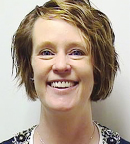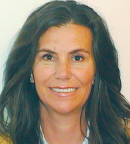Ensuring that people with cancer understand how cancer treatment could affect their fertility and what options are available for preserving fertility were widely recognized as top priorities by attendees of the 2016 Oncofertility Conference in Chicago. As detailed at the conference, means of achieving those priorities include building a rapid-response multidisciplinary team, presenting patient information about fertility preservation in understandable and age-appropriate formats, and changing practice patterns so that fertility preservation options are addressed and initiated early.
The Oncofertility Conference is hosted by the Oncofertility Consortium, a global initiative with the stated purpose of addressing “the complex health-care and quality-of-life issues that concern young cancer patients whose fertility may be threatened by their disease or its treatment.” The consortium’s governing structure is based at Northwestern University Feinberg School of Medicine, Chicago.
Standard methods of fertility preservation are sperm banking and embryo and oocyte cryopreservation. Testicular cryopreservation and ovarian tissue cryopreservation are still considered experimental.
Changing Practice Patterns

Changing practice patterns for established physicians—and those established physicians are teaching our medical students—can be very difficult and humbling.— Jacqueline S. Jeruss, MD, PhD
Tweet this quote
Just how proactive physicians should be in discussing fertility preservation for patients who may want to have a child in the near or distant future “remains a discussion that is in evolution,” noted Jacqueline S. Jeruss, MD, PhD. Dr. Jeruss and Teresa K. Woodruff, PhD, discussed this evolving role for physicians in an interview with The ASCO Post.
Dr. Jeruss is Director of the Breast Care Center and Associate Professor of Surgery at the University of Michigan Health System, Ann Arbor. Dr. Woodruff is Vice Chair for Research, Thomas J. Watkins Professor, Department of Obstetrics and Gynecology, Northwestern University Feinberg School of Medicine. She is also Director of the Women’s Health Research Institute and served as one of the conference chairs.
Dr. Jeruss and Dr. Woodruff coauthored an article on fertility preservation in cancer patients that was published in The New England Journal of Medicine in 2009. “What we said at the end of that paper remains true today,” according to Dr. Jeruss. “Clinicians must break through old practice patterns and understand that young patients will no longer be concerned only with preserving their lives in the present but will want to preserve the fullness of their future as well.”1
Much More to Do

Bringing disciplines together is the next-generation [approach to] wellness in America. To make us better practitioners, we have to collaborate outside of our specialties, to be able to have a common language.— Teresa K. Woodruff, PhD
Tweet this quote
To demonstrate how much more still needs to be done when it comes to discussing fertility with patients undergoing treatment for cancer, Dr. Jeruss cited two studies involving women with breast cancer. A Cleveland Clinic retrospective chart review of 303 patients found that only 26% had a documented fertility discussion with their physicians.2 And a survey of lead surgeons at 28 cancer centers in Canada showed that 36% reported that they rarely or never discuss fertility; 51% said it was not their responsibility to refer to a fertility specialist.3
“Changing practice patterns for established physicians—and those established physicians are teaching our medical students—can be very difficult and humbling,” Dr. Jeruss commented. Medical school and training may not have adequately prepared physicians for complex discussions involving not only managing a patient’s cancer, but also addressing actions needed now to preserve future fertility.
“For example, for me, going through medical school and then training to be a general surgeon and a breast surgical oncologist, there was little direction given about understanding the meaningfulness of fertility and how my medical oncology colleagues were confronting that with their patients,” she added.
Existential Crisis
“As a surgeon and a lead point in the care of patients with breast cancer and their journey to good health”—but then still a relatively new practitioner—Dr. Jeruss noted, “I didn’t have the confidence, the skill set, or the words at my disposal for discussing fertility preservation that I did for discussing the breast cancer diagnosis and surgical options, medical plan, reconstruction, and follow-up.” Dr. Jeruss, who practiced at the Robert H. Lurie Comprehensive Cancer Center of Northwestern University for 18 years, credits Dr. Woodruff for developing an educational and training program, including structured language for discussing fertility preservation options, so that physicians are more confident in initiating these conversations.
Dr. Jeruss “was really an index case,” Dr. Woodruff said, because in the early stages of the training program, “it was hard to imagine how to do it.” The need to be able to have fertility discussions with patients was driven home when Dr. Jeruss began treating a young patient with cancer, and the patient and her husband were distraught, thinking that the cancer and its treatment would destroy their plans for having a family. “It is the most existential crisis you can imagine, a cancer diagnosis in a young woman,” Dr. Woodruff noted.
“Then it becomes this dialogue that has a lot of tension in it, about how to survive and how to establish a hierarchy of goals,” Dr. Jeruss said. Physicians need to listen carefully to what patients’ goals are and help them make decisions based on data about what treatment to receive, so that patients don’t feel they are being put into “restrictive treatment paradigms about what needs to happen and what will happen,” Dr. Jeruss said. Listening carefully and discussing fertility options could alleviate patient anxiety and reduce threats to fertility or refusal to receive recommended treatment.
“We need to recognize this not just as a survivorship issue, but as an outcomes issue,” Dr. Jeruss said. “Patients may be prioritizing fertility and feel that their concerns are not being addressed; consequently, they may be reluctant to proceed with a recommended treatment plan. As physicians, we need to be sensitive to these concerns, or patients may forgo critical cancer treatments.”
Reason for Optimism
Although many people in senior leadership positions at cancer centers around the nation haven’t had the opportunity to go through a training program in oncofertility, Dr. Jeruss believes “there is a significant reason for optimism” about implementing a multitiered approach to establishing the field of oncofertility. Education is key to changing practice patterns, so that patients’ concerns about fertility are addressed upfront and the generations of physicians coming up feel like this is “the more normative” way to care for patients, Dr. Jeruss noted. “We have to believe that through education, we really are going to broaden the physician experience.”
Fellowship rotations at Northwestern incorporate oncofertility. In addition, oncofertility issues are addressed as part of a workshop for fellows in surgery, pediatric oncology, and radiation oncology. These fellows are just developing their referral patterns, Dr. Woodruff noted, “so having them here for a specific educational program and then listening and doing are really important to the next generation of leaders.” In addition, the program content will be made available online in an open-access format through the American Society for Reproductive Medicine.
Dr. Jeruss noted that multidisciplinary breast surgical oncology training fellowships are also available at other centers, including the University of Michigan Health Systems, Ann Arbor. Fellows interface with reproductive endocrinologists and learn appropriate clinical language for talking to a patient about fertility issues.
Beyond Cancer Treatment
Being based at a medical center that is not a dedicated cancer center has been helpful in developing the oncofertility program at Northwestern, Dr. Woodruff said, because the staff includes medical professionals not usually affiliated with a cancer center.
“This was an epiphany to me,” Dr. Jeruss said. “If you were a patient who was diagnosed with breast cancer during pregnancy in the second trimester and being treated at a cancer center and then needed the presence of a high-risk obstetrician,” you may need to go elsewhere for that care. But in that case, the high-risk obstetrician would not have the advantage of working alongside the patient’s treating oncologist, Dr. Woodruff added.
“Bringing disciplines together is the next-generation [approach to] wellness in America. To make us better practitioners, we have to collaborate outside of our specialties, to be able to have a common language,” Dr. Woodruff remarked. “Oncofertility is just the first step, and over the next 10 years, we are going to see more of a merger. People cannot get more specialized. The depth has to be met with intellectual width, and that is where we are going with oncofertility.”
The Oncofertility Consortium provides “a great template to bring people together,” Dr. Woodruff continued. Speaking of the Oncofertility Conference in particular, she said: “If you look around this room, we’ve got patients; we’ve got patient advocates; we’ve got every brand of training. We’ve got allied health professionals sitting right next to the surgeons. It really is the kind of place that you can learn and then do and then have a community to come back to and learn again. It is that kind of mobility that is going to change the world.”
Multidisciplinary Team
A fertility preservation program “is very much a multidisciplinary issue,” Valerie Gillis, MMS, PA-C, a physician assistant at Northwestern Medicine, emphasized during her presentation at the Oncofertility Conference.4 The “obvious” team members, she noted, are the oncology and hematology physicians, urologists, oncology and urology nurses, reproductive endocrinologists, laboratory staff, patient navigators, and social workers. The less obvious players are the phone receptionists, inpatient unit clerks, billing professionals, psychologists, chaplains, fellows, residents, and administration staff.
“Medical and radiation oncologists are usually the first ones to discuss treatment and threats to a patient’s fertility,” Ms. Gillis said, so it is important that they know how to rely on the expertise of other team members. The patient navigator can serve as a resource for these referring physicians as well as for patients. Psychologists can provide support and assist patients in making decisions about fertility preservation or “alternative options for family building,” such as adoption, Ms. Gillis noted.
Physicians can facilitate the flow and keep patients on track for procedures and treatment. Because the need for treatment may be imminent, getting “buy-in” from all team members, Ms. Gillis said, can help ensure that patients and/or parents get timely information about fertility preservation and have the opportunity to pursue fertility procedures before treatment begins.
Pediatric/Adult Care Collaboration
The Oncofertility Service Line Initiative is a collaborative, multidisciplinary effort between a pediatric hospital (Rainbow Babies and Children’s Hospital Angie Fowler Adolescent and Young Adult Cancer Institute in Cleveland) and an adult cancer center (University Hospitals Cleveland Medical Center Seidman Cancer Center) to provide pretreatment reproductive guidance to adolescent and young adult (AYA) patients with cancer in compliance with ASCO and National Comprehensive Cancer Network® guidelines. As noted in a poster presentation at the Oncofertility Conference, these guidelines are readily available but often not used in practice.5

Breanne Roche, MSN, RN, CPNP
In an interview with The ASCO Post, Breanne Roche, MSN, RN, CPNP, pediatric nurse practitioner at Rainbow Babies and Children’s Hospital, explained, “Our goal is to increase awareness of fertility preservation and increase consults…. We refer them to our reproductive endocrinology personnel, so if they want to undergo fertility preservation prior to treatment, they can do that.”
The service line includes a pediatric and adult nurse practitioner, an AYA nurse navigator, and a reproductive endocrinologist. Any of those members can initiate and follow up on the consults. “I think we are unique because we do have the adult and pediatric components,” Ms. Roche said.
Service line team members identify patients by attending tumor boards or through discussion with the oncology team and then “collaborate with the oncology team to determine the risk stratification—low, intermediate, or high,” Ms. Roche continued. The risk-stratification category and fertility preservation options are then discussed with patients and/or parents, depending on the patient’s chronologic age and developmental level.
“These discussions are challenging,” Ms. Roche acknowledged. “Yet they are so important and we have to have them. We owe it to our patients. It is their future. Research shows that pediatric cancer survivors who are now adults may have symptoms similar to posttraumatic stress disorder in regard to being infertile because of their cancer treatment.”
Animated Video Presentation
At Cincinnati Children’s Hospital Medical Center, a short animated video is being used to introduce the concept of fertility preservation and offer basic information on some options.6 Children and their parents can watch the video as many times as they want before they meet with the fertility preservation team.

Karen C. Burns, MD, MS
“Hopefully they will have time to digest the information before they meet with us, and it will be a more productive meeting,” Karen C. Burns, MD, MS, explained before screening the video at the Oncofertility Conference. Dr. Burns is Co-Director of the Comprehensive Fertility Care & Preservation Program and Clinical Director of the Cancer Survivorship Center at Cincinnati Children’s.
The packet of printed materials to accompany the video includes fertility preservation information cards for a member of the oncofertility team to review with patients and their parents and an infertility risk meter to indicate the patient’s risk.

Tara Schafer-Kalkhoff, MA
The animated format was used to simplify the information for young patients, and so far the reception has been “awesome,” Tara Schafer-Kalkhoff, MA, Clinical Research Coordinator at Cincinnati Children’s, said in an interview with The ASCO Post. “No family has declined [to watch the video]. Everyone has been positive about its being presented with good timing in a good setting, and they were open to receiving the information,” she said.
“We are trying to determine the best means to deliver the information,” she continued, and the impact of the video will be compared with printed materials. Although the video is appropriate for young patients, she noted that “some parents are still shielding their children from the diagnosis and don’t want them to know everything. So we always leave that up to the parents’ discretion.” ■
Disclosure: Drs. Jeruss and Woodruff, Ms. Gillis, Ms. Roche, Dr. Burns, and Ms. Schafer-Kalkhoff reported no potential conflicts of interest.
References

